Si bien el rastrero Charlie es una excelente alternativa de césped tolerante a la sequía, también es una maleza y puede ser una adición extremadamente invasiva para su jardín. Como sugiere su nombre, la planta es un cultivador rápido, resistente y adaptable y puede apoderarse rápidamente de su césped y jardines. El mayor problema es que suprime el crecimiento de otras plantas que pueden causar estragos en el trabajo que has realizado durante todo el verano.
Si ha notado que algunas de estas flores púrpuras engañosamente bonitas crecen en su jardín, es hora de actuar. Afortunadamente, esta guía ha compilado una lista de los tres mejores métodos para eliminar el rastrero Charlie, consejos a tener en cuenta y cómo evitar que la maleza regrese a su jardín.
Cómo identificar a Creeping Charlie
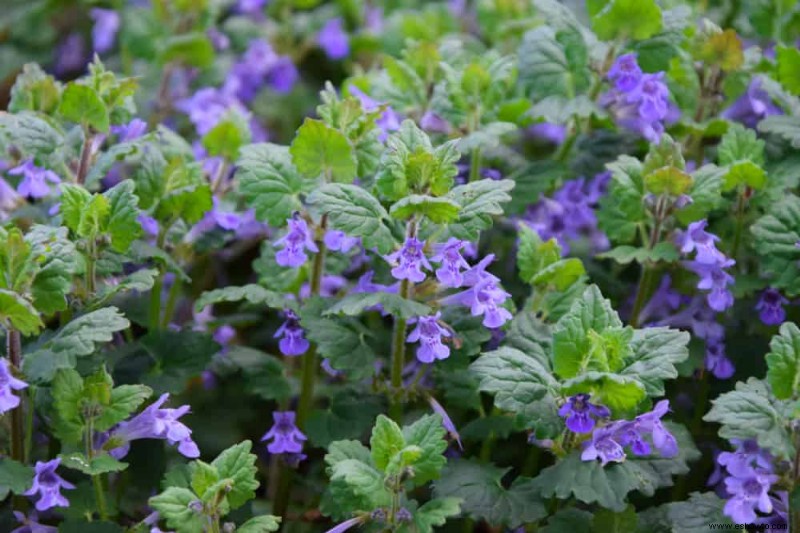
Creeping Charlie es una planta astuta y encontrará su camino en su jardín rápidamente. Dicho esto, un ojo atento y la atención a los detalles lo ayudarán a detectarlo y detenerlo antes. Las hojas de color verde brillante con bordes festoneados y tallos cuadrados son la mejor manera de detectar la planta. Las flores azules y moradas en forma de embudo son el signo más revelador de la hierba, pero solo florecerán en racimos en la primavera y principios del verano.
Si cree que no ha encontrado a Charlie arrastrándose en su jardín, considere las otras plantas que debe evitar en el centro de jardinería que pueden haber invadido su césped.
Herramientas que necesitará
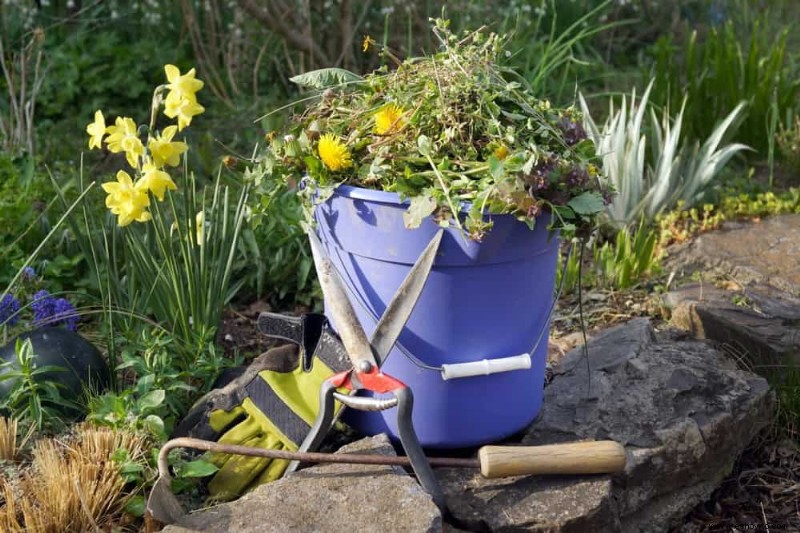
Para eliminar y evitar que Charlie se arrastre en su jardín y césped, necesitará algunas herramientas. Afortunadamente, muchos jardineros ya las tendrán en su arsenal. Echa un vistazo a los elementos esenciales a continuación.
- Guantes de jardinería
- Tijeras de podar
- horquilla
- Paleta manual
- Herbicida
- Cubo o bolsa de recolección
- Periódicos, cartón o una lona
- Rastrillo
3 métodos para deshacerse de Creeping Charlie
1. Quitar a mano
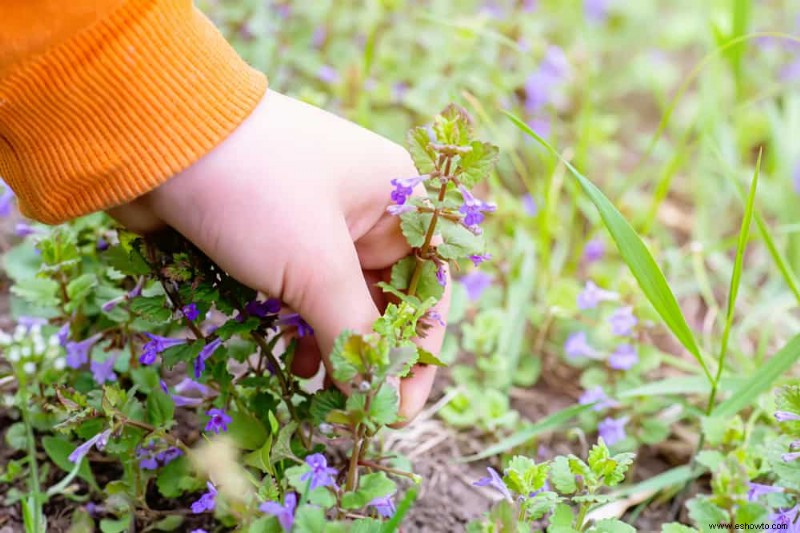
Creeping Charlie es una maleza con raíces poco profundas, por lo que quitarla de su jardín a mano no es demasiado complicado. Para comenzar, arranca las enredaderas y usa un par de tijeras de podar afiladas para cortar los tallos y el follaje. Asegúrese de colocar todos los recortes en una bolsa de recolección y deséchelos adecuadamente para asegurarse de que la planta no vuelva a crecer.
Una vez que haya quitado todas las enredaderas, puede determinar de dónde crece la planta y usar su horca para aflojar la tierra alrededor de las raíces. Luego, puedes desenterrar la planta, siendo diligente para quitar todas las raíces. Nuevamente, deseche adecuadamente las raíces.
2. Usa un herbicida
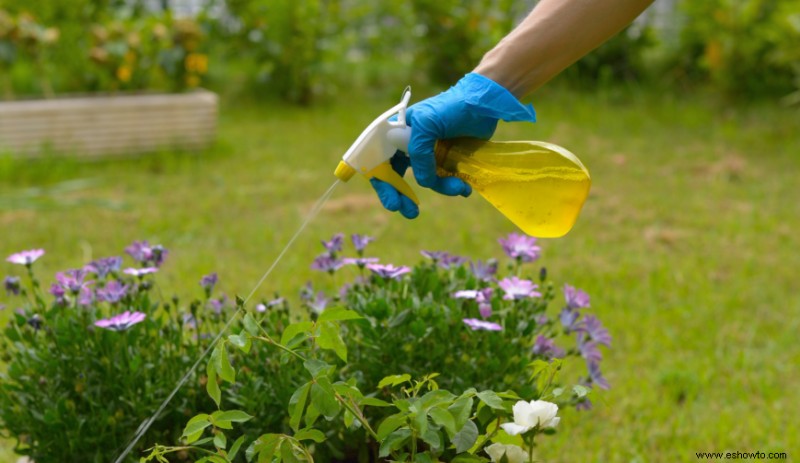
El herbicida es el método ideal si deshierbar a mano no es una opción. Esto eliminará de manera efectiva la maleza de su jardín o césped sin matar el césped o las plantas. Si bien puede hacer un herbicida de bricolaje, el rastrero Charlie requiere un producto específico, por lo que puede ser mejor comprar uno etiquetado para la planta.
Be sure to mix and apply the herbicide following the directions on the container or bag. Wear the proper PPE and keep pets and children away from the area. Repeat the process until the plant has completely died. Because creeping Charlie tends to smother plants and grass, you may need to re-seed or re-plant the area.
3. Smother the Plant

If there is way too much creeping Charlie for you to weed by hand, you can also try smothering the plant. You can use a tarp, newspaper, or a sheet of cardboard. By laying this on the ground the creeping Charlie will not have access to any sunlight or water. Of course, this will kill any plants or grass in the area as well, so it’s a last resort.
Simply place the material over the plants, covering 6-12 inches around the area to smother any roots underground. Place rocks around the edges to hold it in place and wait about a week. Once all the plants are dead you can rake up the remains and re-seed the lawn.
How to Prevent Creeping Charlie
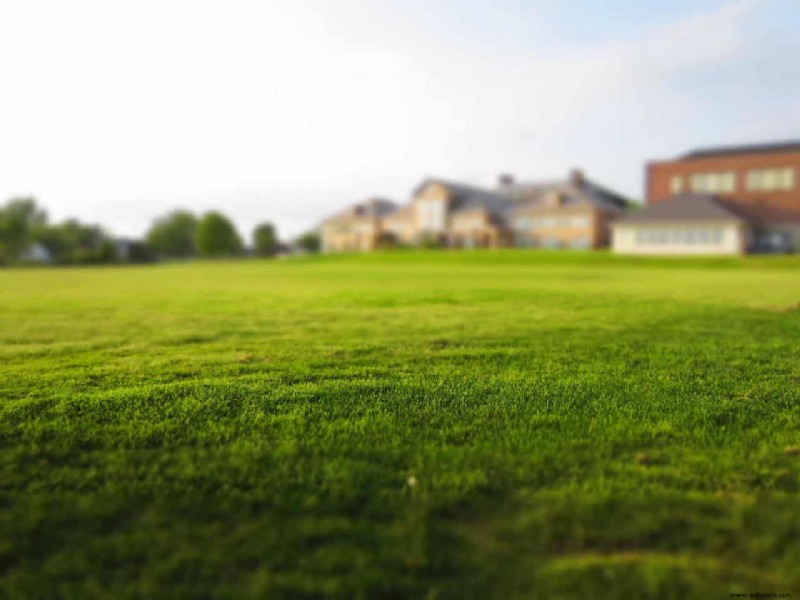
With the three methods for getting rid of creeping Charlie in mind, there are also a few tips and tricks that will help you along the way. These are great methods for preventing the weed, whether you’ve never had it or if you don’t want it to return.
- After weeding, fill in bare areas with grass seed to ensure the creeping Charlie doesn’t come back
- Since creeping Charlie prefers the shade, prune your trees. This will be beneficial for your lawn and plants as well
- Ensure your lawn is properly mowed and maintained
- Water deeply and infrequently to help your grass form stronger roots
- Use a high-quality fertilizer on your grass
- Add mulch to your plant beds to halt any weed growth
Say Goodbye to Creeping Charlie!
Creeping Charlie can invade your lawn and garden and it is frustrating to deal with. But these three methods are the best way to remove it properly and prevention is key to ensure it’s gone for good. Plus, if you identify it earlier, you’ll be able to kill it before it takes over. Also, using more than one method in conjunction with one another will provide the best results.
While creeping Charlie is an invasive plant, it does offer a few benefits you may want to consider. It’s a pollinator, non-toxic to kids and pets, and is a great drought-tolerant lawn alternative.

